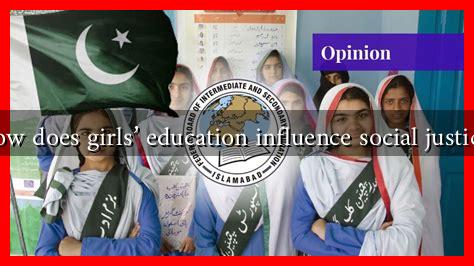-
Table of Contents
How Does Girls’ Education Influence Social Justice?
Education is a fundamental human right and a powerful tool for social change. When girls are educated, the ripple effects extend far beyond individual empowerment; they contribute significantly to social justice. This article explores the multifaceted relationship between girls’ education and social justice, highlighting its impact on economic development, health, and gender equality.
The Importance of Girls’ Education
Globally, girls face numerous barriers to education, including poverty, cultural norms, and violence. According to UNESCO, over 130 million girls are out of school, which not only affects their future but also hinders societal progress. Educating girls is crucial for several reasons:
- Empowerment: Education empowers girls to make informed choices about their lives, leading to greater autonomy and self-esteem.
- Economic Growth: Educated women are more likely to participate in the workforce, contributing to economic development.
- Health Benefits: Education leads to better health outcomes for women and their families, including lower maternal and infant mortality rates.
- Social Change: Educated girls are more likely to advocate for their rights and challenge societal norms.
Linking Education to Social Justice
Social justice refers to the fair distribution of resources, opportunities, and privileges within a society. Girls’ education plays a pivotal role in promoting social justice through various channels:
1. Economic Empowerment
Educated women are more likely to secure better-paying jobs, which helps break the cycle of poverty. A World Bank report indicates that each additional year of schooling can increase a woman’s earnings by up to 20%. This economic empowerment not only benefits the individual but also uplifts families and communities.
2. Health and Well-being
Education significantly impacts health outcomes. Educated women are more likely to access healthcare services, understand health information, and make informed decisions regarding their health and that of their children. For instance, a study by the Population Council found that girls who complete secondary education are 50% more likely to immunize their children than those who do not.
3. Gender Equality
Education is a powerful equalizer. It challenges traditional gender roles and promotes gender equality. Educated women are more likely to participate in political processes and advocate for policies that promote social justice. For example, in Rwanda, where women hold a significant percentage of parliamentary seats, the emphasis on girls’ education has led to progressive laws on gender equality and women’s rights.
Case Studies and Examples
Several initiatives around the world illustrate the transformative power of girls’ education:
- Malala Fund: Co-founded by Nobel laureate Malala Yousafzai, this organization advocates for girls’ education globally, particularly in regions where girls face significant barriers.
- Girl Rising: This global campaign uses storytelling to inspire action for girls’ education, highlighting the stories of girls who have overcome obstacles to pursue their education.
- Educate Girls: An NGO in India that focuses on mobilizing communities to enroll girls in school and improve their learning outcomes, contributing to gender equality in education.
Challenges and the Way Forward
Despite the clear benefits of girls’ education, challenges remain. Cultural norms, economic barriers, and political instability can hinder progress. To overcome these challenges, a multi-faceted approach is necessary:
- Community Engagement: Involving local communities in advocating for girls’ education can help change cultural perceptions.
- Policy Advocacy: Governments must prioritize girls’ education in their policies and allocate resources accordingly.
- International Support: Global organizations and countries should collaborate to provide funding and resources for girls’ education initiatives.
Conclusion
Girls’ education is not just a matter of individual rights; it is a cornerstone of social justice. By empowering girls through education, we can foster economic growth, improve health outcomes, and promote gender equality. The evidence is clear: investing in girls’ education yields significant returns for society as a whole. As we move forward, it is imperative that we continue to advocate for and support initiatives that prioritize girls’ education, ensuring a more just and equitable world for all.
For more information on the importance of girls’ education, visit UNESCO’s Girls’ Education page.




